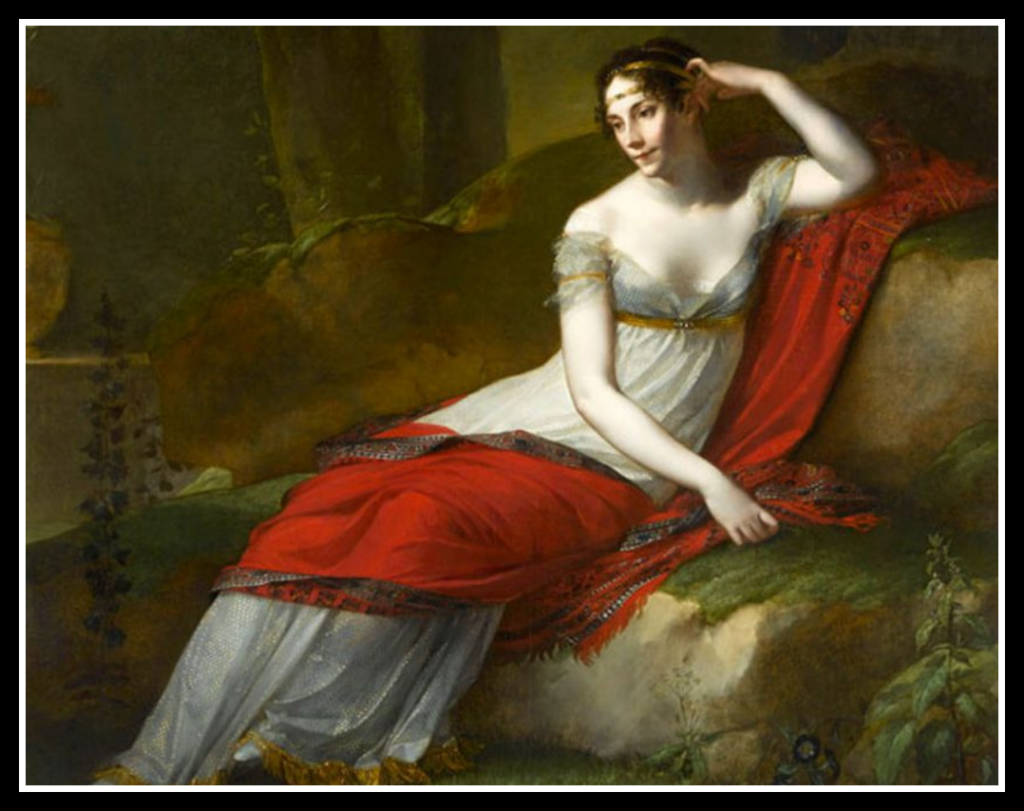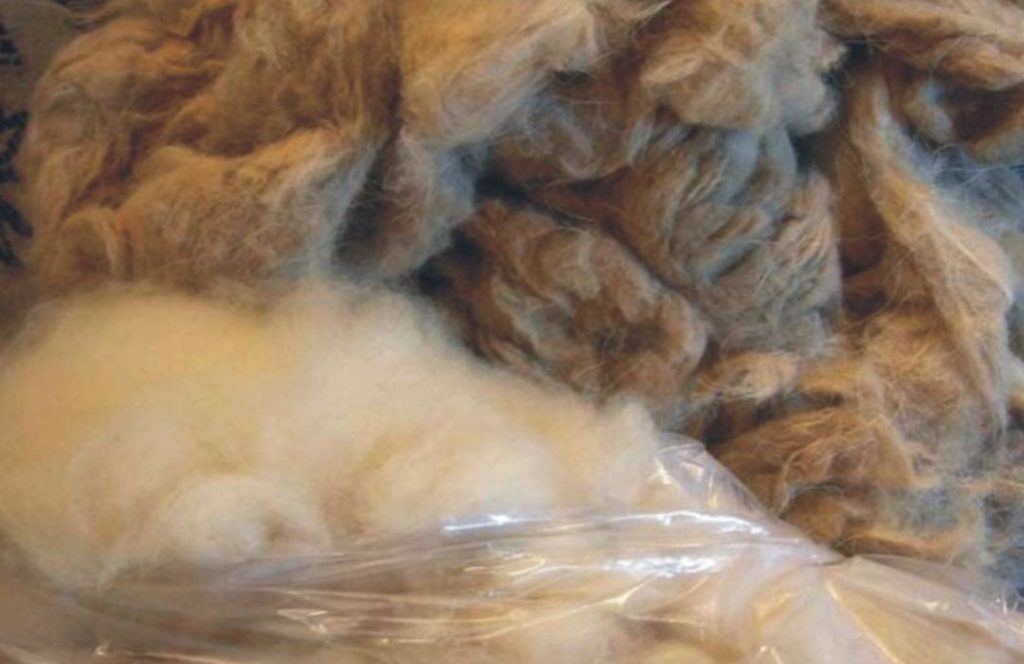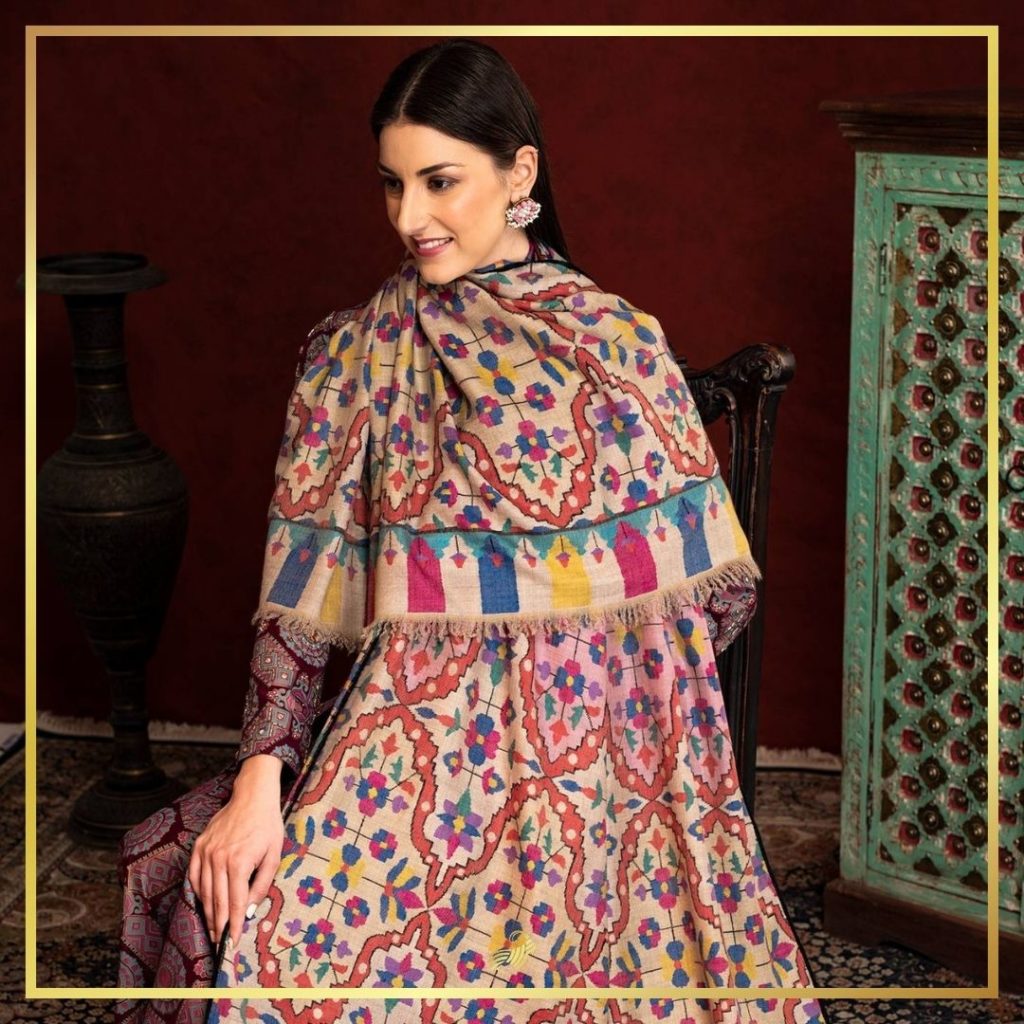When Pashmina meets Kani, an artistic magic ensues.
The story of Kani and Pashmina begins in the snow attired valley of Kashmir. Winters are severe, cruel and a hurdle to almost everything, except art. From time immemorial, craft making has been the main activity of artisans here, and this tradition endures till now. The stillness outdoors reposes everything inside, and womenfolk remain busy with spinning fine Cashmere to yarn. Their days remain engrossed with the gossamer fine yarn, and so do their minds. This is the winter season for Kashmir, where art flourishes in each home, to finally come out to the world in summers, when the valley comes out of the veil of winter.
Kani Shawls of Kashmir
Shawl weaving is to Kashmir as creativity is to an artisan. These are inseparable from each other. When it comes to creativity, there is always a masterpiece from an artisan, that he himself considers his best offering. Likewise the masterpiece of shawl weaving in Kashmir is the Kani shawl. Shawls handwoven in the Kani weave are considered nothing less than magic. Kani artisans are different from others in the realms of creativity, patience and pure love for the work.
The Kani shawl is a product of time. Kani shawls of Kashmir take years together to complete, especially when it is a Kani jamawar shawl where motifs spread all over the base. The intersection of warps and wefts is magical, and hence takes all the time in the world to make the end product a piece of art. This takes years of the artisans life, his artistic creativity, his skill, and the instructions from the older generations that they learnt over time.
The Romance of Kani and Pashmina
Pashmina is the art which is revered in Kashmir. It is not just loved and cherished, but women are emotionally attached to it. The reason for this pure love is the way Pashmina shawls have provided livelihood to women since centuries now. Since the 15th century, women have been fully dependent on spinning of Ladakhi Cashmere which results in the making of Pashmina shawl. Hence, it is not just a piece of fabric that they craft, but a load of emotions that brings them a happy nostalgia.

When Kani weave meets Pashmina, it is simply magic. The way the warps and wefts of Pashmina and Kani weave meet is simply a treat to watch and experience. It was the Kani shawl of Kashmir that spread its wings in Europe. European royals loved and cherished the Kani shawls so much so that Empress Josephine - the fashion icon - owned over a hundred shawls. Kani, being an expensive and a painstakingly crafted art, was not done on any other shawl made from wool or silk. Pashmina shawls were specially chosen to feature Kani weave, and this was the best decision of the artisans, as the shawls prospered like anything.
To know more about the grand rendezvous of Pashmina and Kani, let us go deep into its making, know its artisans, and learn how it grew as one of the most expensive and precious treasures in the world.
Making of a Kani Pashmina Shawl
The artistic weave of Kani begins only when the yarn of Cashmere has been spun. Cashmere is acquired from Ladakh, where a rare goat species grows it. During the moulting period, the herders of the goat gently comb out its soft fleece. This fleece is raw Cashmere and needs processing. It is first cleaned and then sent to Kashmir for processing.

As soon as it arrives in Kashmir, womenfolk welcome it by cleaning it thoroughly. They separate each fine thread and remove any guard hair or waste products attached to it. Now the fleece is placed in a rice water paste for a few days to make it strong and shiny. After removing the fleece from this paste it is washed again, and now sent for spinning.
Spinning of raw Cashmere is done over a wooden spinning wheel which is traditional to Kashmir. Women spin the lumps of raw wool with a perfect rhythm of their hands and the spinning wheel. This process converts the wool chunks to fine yarn. The yarn has a diameter of just 12 to 16 microns. This is the warp yarn, and is sent for weaving. And this is not just any weaving. It is the enchanting Kani weave.
Also read: WHO FOUND PASHMINA SHAWLS?
Introduction of Kani into Pashmina
To start with, a designer or a Naqash first draws a design on graph paper. This is handed over to a taran guru, who converts the design into a coded pattern, called Talim. This talim guides the weavers in the number of warp threads to be covered in a particular coloured-weft. Weaver starts weaving the shawl like a carpet, and introduces colours of the wefts with the help of Kanis or small wooden bobbins around which coloured threads of the weft are wound. Hence there is no embroidery in Kani shawls, and it is the coloured thread of the weft that shows as motifs in these shawls. This is the uniqueness of Kashmiri Kani shawl. Kani shawls are masterpieces born out of patience and tremendous skill.

The level of concentration the artisans of a Kani shawl have is hard to believe. Depending on the intricacy and complexity of the design of a Kani shawl, an artisan can weave a maximum of just one inch per day. It can take anywhere between 3 to 36 months to weave a Kani Shawl. The Kani artisans work for 6 to 8 hours a day in this enthralling procedure. Owing to such complexity, only the trained and most knowledgeable artisans know how to weave Kani Shawls the right way. The techniques and know-how has traditionally been transferring from forefathers to future generations
The amount of labour, time and skillful craftsmanship that goes into making a Kani shawl is worth observation. This makes Kani shawls one of the most expensive accessories in the world.
The Love for Kani Shawl

Kani Shawls are housed in world's finest museums like Victoria and Albert Museum in London, the Musée des Arts Décoratifs in Paris and the department of Islamic art at the Metropolitan Museum of Art, New York. And it surely does not come as a surprise to any patron of this majestic art.
Also read: THE STORY OF CASHMERE AND PASHMINA ART